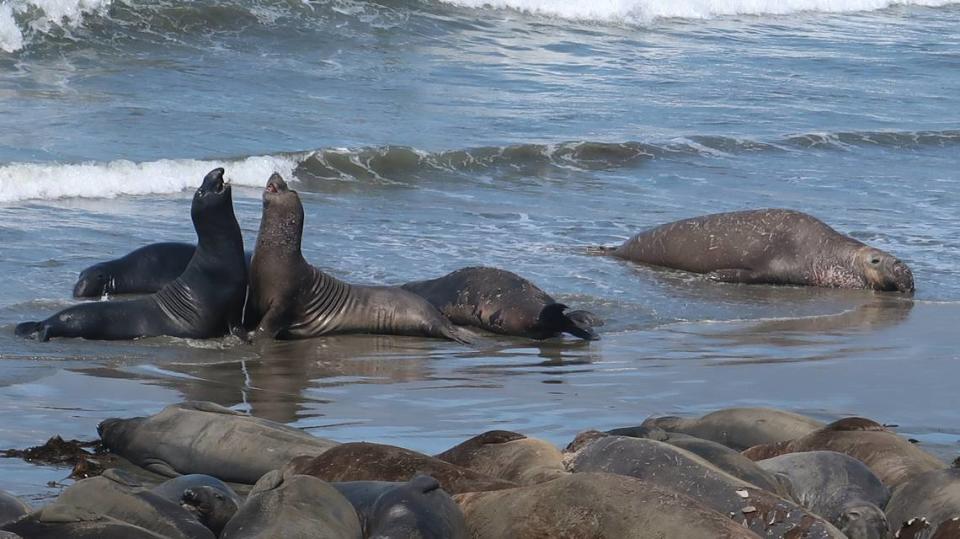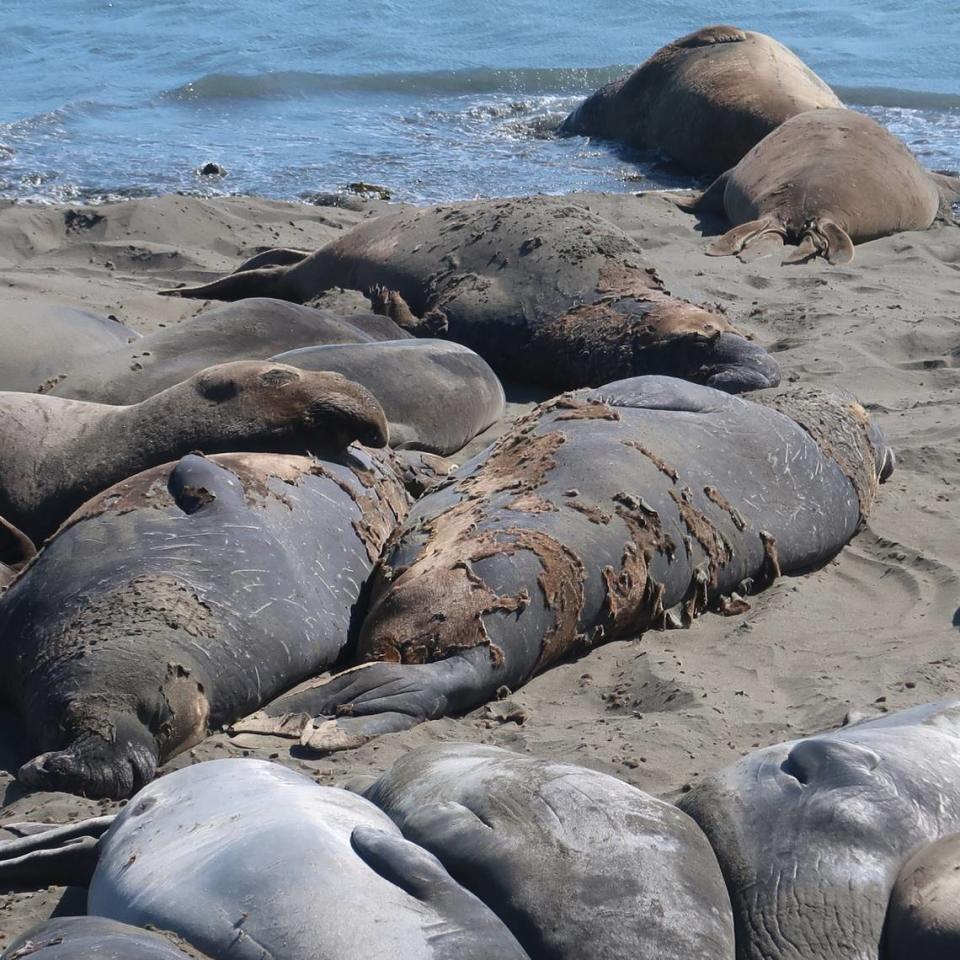What’s that sound? Elephant seal bulls are back in full force at SLO County beach
Deep, guttural calls echoes through the air, greeting visitors as they get out of their cars in the Piedras Blancas elephant seal viewpoint parking lot off Highway 1.
The bulls are back on the beach in San Luis Obispo County.
Male elephant seals are surfing up onto the sand north of San Simeon for a month of rest while they molt their skin.
They look ratty, but that’s normal. These seals are healthy and don’t have any vanity about their appearance.
They are fewer in numbers, but much bigger than the females.
Summer is the time to view them as non-combatants. The massive marine mammals spar with each other occasionally, but mostly lie next to each other without threat so visitors can get a good look at them.

Elephant seal bulls are back from migration
When the bulls left the beach in March, they were at their annual low point.
After three months living off their blubber to compete with other bulls for breeding rights, they were at their thinnest.
It’s feast or famine for elephant seal bulls. They don’t eat while they are traveling to and from
their feeding areas, along the continental shelf, from Oregon to the Aleutian Islands.
That’s a journey of about 5,000 miles, round trip.
The bulls have to pack a lot of feeding into the five or so weeks before it’s time to return to shore.
They dive to the bottom there, and feed on bottom-dwelling fish such as skates, rays, hagfish and any other fish that come across their path. One was seen swallowing a 3-foot-long dogfish shark whole, and headfirst.
“The pattern is to bulk up the blubber layer quickly twice a year and then ‘feed’ off of it while fasting the rest of the year,” elephant seal research leader Bernie Le Boeuf said in his book “Elephant Seal: Pushing the limits on land and at sea.” “They are record-setting, physiological curiosities!”

Molting season for male seals
All elephant seals molt their skin once a year.
Female seals and juveniles were at the Piedras Blancas rookery in May and June. They have since returned to the ocean.
The juveniles come back to shore in the fall but females will stay at sea until January, when they return to give birth to their pups.
Last year’s brown and tan skin and hair, made of keratin, peels off in chunks.
Beneath it is a new layer of skin, which looks pearly gray or silver. The new brown hair is just starting to appear on the surface.
Ask a blue-jacketed Friends of the Elephant Seal docent to see and touch a sample of elephant seal fur. It’s rough, not soft and silky, like otter or fur seal fur.
Elephant seals rely on their blubber for warmth, not their coats.
Piedras Blancas lighthouse hosts Open House
Piedras Blancas Light Station will be open for free tours from 10 a.m. to 2 p.m. Aug. 2 and 16.
Hike in from the Boucher Trail trailhead at the north parking lot of the elephant seal viewpoint or from the Boucher Trail trailhead a mile north of the lighthouse.
You can observe the elephant seals from several other vantage points along the trail.
For more information, check the Piedras Blancas Light Station website or email PiedrasBlancasTours@gmail.com.

